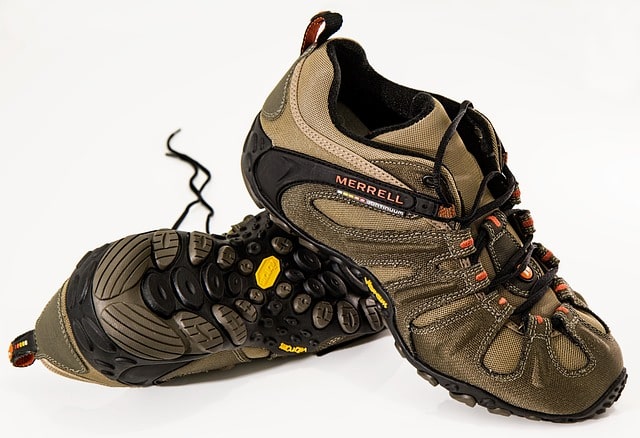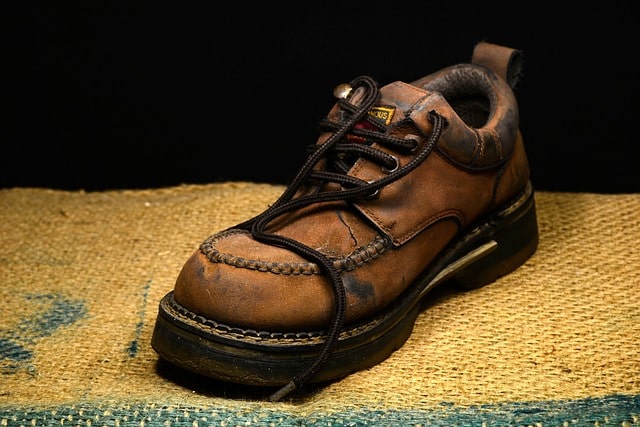Shoes have played an important role within human civilization for countless centuries, serving not only as a means of protecting our feet but also as an expression of fashion. From ancient times to contemporary fashion trends, footwear has changed, becoming a symbol of personal style and self-expression. In this piece, we’ll begin our exploration of 10 Facts About Shoes, from their historical origins to their importance in the fashion world.
Table of Contents
Introduction
10 Facts About Shoes: From History to Fashio
The shoes have come a wide journey since their humble beginnings. They have not only protected our feet from inhospitable scenarios but have also evolved as a reflection of our style and personality. Let us delve into the enticing realm of shoes and uncover some interesting details.
1. Origin of shoes
Man has worn shoes for thousands of years. The earliest traces of shoes date back to around 7,000 to 8,000 BC, when people made simple sandals using grass, leaves, or animal skins. These primitive shoes provided rudimentary protection and insulation.

2. Ancient Innovations in Shoes
As civilizations developed, so did the design of shoes. In ancient Egypt, artisans produced sandals adorned with intricate patterns and often embellished with precious gems and metals. The Romans introduced closed-toed shoes and sturdier boots, which provided better protection and durability.
3. Evolution of Shoe Styles
Throughout history, shoe styles have shown considerable variation. From the tall, pointed shoes of the Middle Ages to the sophisticated and functional shoes of the Renaissance, each period boasted its own distinctive footwear trends. The advent of the Industrial Revolution led to mass production, making shoes more accessible and affordable.
4. Origin of high heels
High heels have a long and illustrious history. Originating in ancient Persia, they were initially donned by men for horse riding purposes. However, during the 17th century, high heels became associated with femininity and grace, evolving into the iconic symbol of fashion and authority that we recognize today.
5. famous shoe designer
Shoe designers have played an important role in shaping the footwear industry. Salvatore Ferragamo, a pioneer in innovative shoe designs, introduced the cork wedge heel during the 1930s. Her imaginative and audacious creations caught the attention of celebrities and fashion enthusiasts alike. Another notable shoe designer is Christian Louboutin, famous for his distinctive red-soled shoes that exude opulence and allure.
6. sneakers: a cultural phenomenon
Sneakers, once primarily associated with sports and athleticism, have transcended their utilitarian purpose to become a cultural phenomenon. The beginnings of sneaker culture can be traced back to the 1980s when iconic brands such as Nike and Adidas collaborated with athletes and celebrities, creating limited-edition designs that ignited a fervor among collectors. Currently, sneakers are worn for both athletic activities and as a fashion statement, continually attracting enthusiasts with fresh designs and collaborations.

fun facts about shoes
7. shoes in pop culture
Shoes have left an indelible mark on popular culture through a variety of means. In literature, we encounter the enchanting glass slipper in the fairy tale of Cinderella, which symbolizes transformation and the realization of dreams. The iconic ruby slippers worn by Dorothy in “The Wizard of Oz” symbolize her longing to return home. In music, Nancy Sinatra’s chart-topping song “These Boots Are Made for Walkin'” became an anthem of female empowerment, underscoring the transformative power of shoes.
8. Diverse footwear trends around the world
Shoe fashion exhibits significant variation across cultures, reflecting their unique styles and traditions. Traditional Japanese footwear includes high wooden geta sandals, designed to keep the wearer’s feet off the ground and protect them from dirt and moisture. Indian juttis are intricately embroidered footwear that showcase the rich heritage of Indian craftsmanship. In Africa, vibrant and colorful beaded sandals are popular, reflecting the continent’s cultural diversity. Exploring shoe trends from around the world helps us appreciate the diversity and ingenuity of global fashion.
9. Adopting sustainability in footwear practices
As environmental concerns continue to grow, the fashion industry is adopting sustainable practices, with the shoe industry following suit. Brands are adopting eco-friendly materials such as recycled plastics, organic cotton and sustainable alternatives to traditional leather. Additionally, ethical manufacturing processes and fair trade initiatives are being implemented to ensure the well-being of the workers involved in shoe production. These sustainable footwear practices aim to reduce the environmental impact of the industry and promote a more responsible and conscientious approach to footwear.

10. interesting facts about shoes
psychological facts about shoes
Let us now learn about some fascinating and interesting facts about shoes:
- The world’s largest shoe store, located in Dubai, is spread over 96,000 square feet and displays a collection of over 250 brands.
- The record for the longest pair of platform shoes ever made is 17.1 inches.
- During the 16th century, men’s shoes were often more lavish than women’s shoes, with elaborate decorations and high heels.
- The average person walks about 115,000 miles in their lifetime, which is equivalent to circling the Earth four times.
- The oldest known leather shoe, discovered in Armenia, is approximately 5,500 years old.
- The term “sneakers” originated from the fact that rubber-soled shoes allow the wearer to run quietly or “stealth”.
- The most expensive pair of shoes ever sold was a pair of diamond-encrusted stilettos, which cost $3 million.
- The world’s largest shoe collection, owned by a Canadian man, includes 20,000 pairs.
Conclusion
Shoes have accompanied humanity in its journey to evolve from practical necessities to symbols of self-expression and style. They connect us to our past, present and future aspirations. From ancient innovations to contemporary fashion trends, shoes have left an indelible mark on our culture. So, the next time you walk into your favorite pair of shoes, remember the rich history, captivating facts and the mesmerizing narrative they provide.
AlsoRead It – 20 Mind-Blowing Facts About the Moon !
How To Unfreeze Cryptocurrency in 2023 – CryptoNewsPod
Who made the first shoe?
The invention of shoes remains unattributed as they trace their origins back to ancient times, spanning thousands of years. The earliest documented pair of shoes, estimated to be from 7000-8000 BCE, was crafted from bark, a naturally occurring material. Leather shoes, considered the earliest known examples, are believed to have emerged around 3500 BCE.
What are some fun facts about shoe size?
The establishment of shoe sizes dates back to 1324 in England, during the reign of King Edward II. He decreed that the diameter of a single barley corn, measuring one-third of an inch, would serve as the basis for a complete shoe size. Remarkably, this standard of measurement is still in use today. For instance, a typical women’s shoe size in the US is 8.5, while men’s shoe size often ranges around 10.5.
What is the main purpose of shoes?
One of the functions of shoes is to absorb the impact of walking, but ill-fitting or inadequate footwear can disrupt the body’s alignment. Insufficient padding or an uneven stride caused by such shoes can lead to inevitable discomfort. The negative effects of poor footwear extend to the ankles, knees, hip joints, and lower back.
What is the oldest shoe?
Dating back to approximately 3500 B.C., during Armenia’s Copper Age, a prehistoric shoe has been radiocarbon dated. It exhibits compression in both the heel and toe regions, likely a result of extensive walking over long distances. Surprisingly, despite its age, the shoe has not worn out completely. Footwear from this era is exceptionally scarce since leather and plant materials typically degrade rapidly over time.
What is the most expensive shoe ever?
Recently, Michael Jordan’s iconic sneakers from the “Last Dance” era achieved a remarkable milestone by becoming the most expensive pair of shoes ever sold. Sotheby’s auctioned off Michael Jordan’s Air Jordan 13 sneakers, which he wore during the 1998 NBA Finals, for a record-breaking amount of $2.2 million.
When were shoes invented?
The oldest documented footwear discovered so far are sagebrush bark sandals, estimated to have originated around 7000 or 8000 BCE. Unearthed in a cave in Oregon back in 1938, this remarkable piece of shoe history remains the earliest known sample of footwear.
fun facts about shoes | funny facts about shoes | facts about Nike shoes | facts about Jordan shoes | interesting facts about shoes | 100 facts about shoes | 10 facts about shoes | 18 interesting facts about Jordan shoes | 5 facts about shoes | cool facts about shoes | fact about shoes | facts about Adidas shoes | facts about ballet shoes | Facts About Shoes | Facts About Shoes | Facts About Shoes




